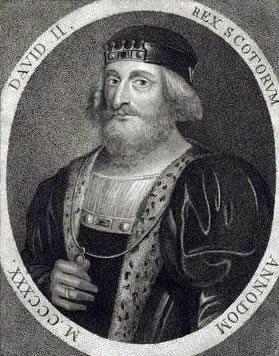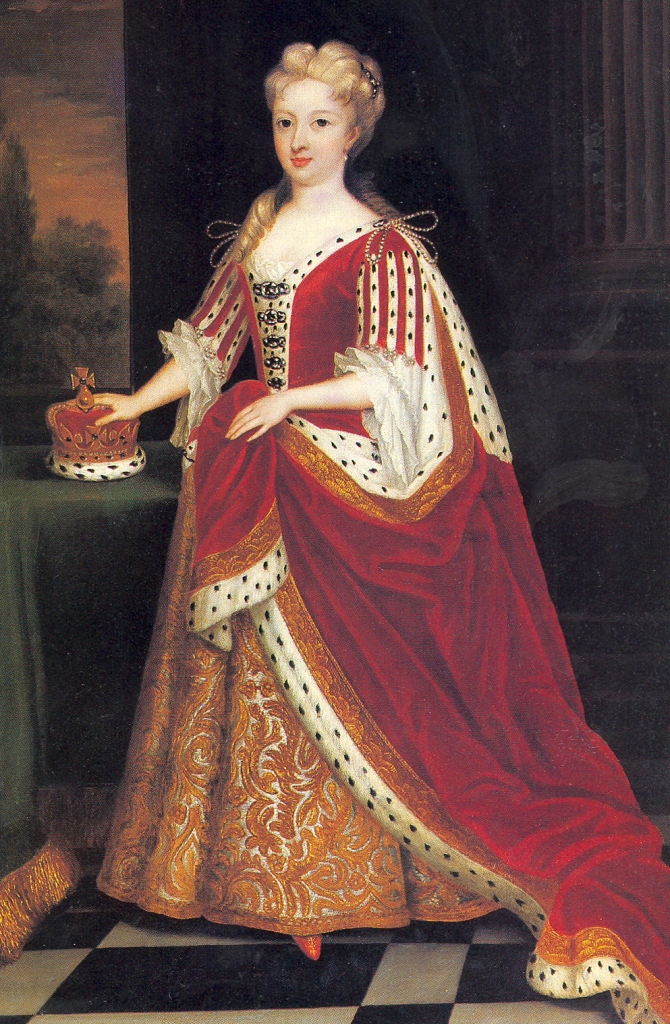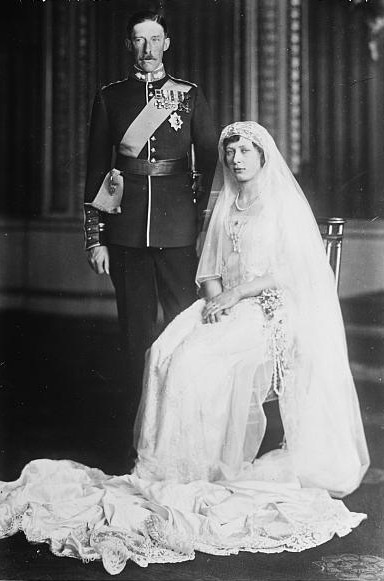© Unofficial Royalty 2024

John of Gaunt, Duke of Lancaster; Credit – Wikipedia
March 6, 1052 – Death of Emma of Normandy, Queen of England, Norway, and Denmark at St. Mary’s Abbey in Winchester, England; first buried at the Old Minster in Winchester, England, in 1093 Emma’s remains were moved to Winchester Cathedral when the Old Minster was demolished
The eldest daughter of Richard I, Duke of Normandy, Emma was successively the wife of Æthelred II the Unready of England and Cnut the Great, King of Denmark, Norway, and England. She was the mother of English kings Harthacnut and Edward the Confessor. In 1042, Emma’s son Edward the Confessor became King of England upon the death of his half-brother Harthacnut. Emma was present at Edward’s coronation on Easter, April 3, 1043, at the Old Minster in Winchester, England. Emma died on March 6, 1052, and was buried at the Old Minster in Winchester beside her second husband Cnut and their son Harthacnut. When the Old Minster was demolished in 1093, Emma’s remains were moved to Winchester Cathedral. They were among the remains in the labeled mortuary chests that rest on top of the choir screen. During the English Civil War, Winchester Cathedral was ransacked and the remains were scattered. The remains were returned to the mortuary chests but were mixed up. In 2012, an examination of the remains in the chests began. The examination included DNA testing, reassembly of the skeletons, and analysis to determine the sex, age, and other characteristics of the remains. In May 2019, it was announced that Emma’s remains were found in several chests.
Unofficial Royalty: Emma of Normandy, Queen of England, Norway, and Denmark
March 6, 1340 – Birth of John of Gaunt, Duke of Lancaster, son of King Edward III of England, at the Abbey of St. Bavon in Ghent, County of Flanders, now in Belgium
A younger son of King Edward III of England, John of Gaunt was a military leader and statesman and the father of King Henry IV of England. Due to his royal birth and marriages, he was one of the richest men of his time and was very influential during the reigns of his father King Edward III and his nephew King Richard II. As Duke of Lancaster, he was the founder of the House of Lancaster, whose members would become Kings of England after his death. All British monarchs since King Henry IV are descended from John of Gaunt, and most European monarchies are also descended from John. The Houses of Lancaster, York, and Tudor were all descended from John of Gaunt’s children.
Unofficial Royalty: John of Gaunt, Duke of Lancaster
March 6, 1725 – Birth of Cardinal Henry Benedict Stuart, younger of the two sons of James Francis Edward Stuart, The Old Pretender who was the son of the exiled King James II of England/VII of Scotland, at the Palazzo Muti in Rome, Italy
Full name: Henry Benedict Thomas Edward Maria Clement Francis Xavier
Cardinal Henry Benedict Stuart was the younger of the two sons of James Francis Edward Stuart, The Old Pretender, who was the son of the exiled King James II of England/VII of Scotland. In 1748, Henry was ordained a priest and then made a Cardinal-Priest. He was created Cardinal-Bishop of the Diocese of Frascati near Rome in 1761. Henry became Dean of the College of Cardinals, who is often, but not necessarily, the longest-serving member of the whole College of Cardinals in 1803. Henry was a Cardinal for fifty-six years and is the longest-serving Cardinal in Roman Catholic Church history. However, in modern times it is virtually impossible to become a Cardinal at the age of 22 as Henry did. With Henry’s death, the male line of the Royal House of Stuart was extinct. The Jacobite line of succession passed to King Carlo Emanuele IV of Sardinia through the line of Henrietta of England, Duchess of Orléans, the youngest child of King Charles I of England. The Jacobite line of succession has proceeded over the years to the House of Savoy, the House of Austria-Este, and the House of Wittelsbach. It appears in the future, that it will proceed to the House of Liechtenstein.
Unofficial Royalty: Cardinal Henry Benedict Stuart
Unofficial Royalty: The Jacobite Succession – Pretenders to the British Throne
March 6, 1823 – Birth of King Karl I of Württemberg in Stuttgart, Kingdom of Württemberg, now in Baden-Württemberg, Germany
Full name: Karl Friedrich Alexander
In 1846, Karl married Grand Duchess Olga Nikolaevna of Russia, the daughter of Nicholas I, Emperor of All Russia. The marriage appeared to be a happy one, although it is possible it was never consummated. By most accounts, Karl was homosexual and enjoyed very close relationships with several men through the years. Karl and Olga adopted Olga’s niece, Grand Duchess Vera Konstantinovna. Karl became King of Württemberg upon his father’s death in 1864. He was far more liberal than his father, and this was reflected in his actions. He restored the freedom of the press and universal suffrage. Although he sided with Austria during the Austro-Prussian War of 1866, he soon entered into a treaty with Prussia, and would later fight alongside them in the Franco-Prussian War of 1870.
Unofficial Royalty: King Karl I of Württemberg
March 6, 1876 – Death of Louise Rasmussen, Countess Danner, former mistress and morganatic third wife of King Frederik VII of Denmark, in Genoa, Italy; buried at Jægerspris Castle in Jægerspris, Denmark
Louise, a dancer with the Danish Royal Ballet, became acquainted with the son of King Christian VIII, Crown Prince Frederik of Denmark, who had already divorced two wives. Louise and Frederik had a relationship during the 1840s. In 1848, Frederik’s father died and he succeeded to the Danish throne as King Frederik VII. Upon becoming king, Frederik wished to marry Louise but the government was not in favor of the marriage. In 1849, King Frederik VII signed a new constitution, changing the monarchy from an absolute monarchy to a constitutional monarchy. The signing of the new constitution made Frederik so popular that the government permitted him to morganatically marry Louise Rasmussen. Louise was not queen consort and was officially styled as Countess Danner. The marriage appears to have been a happy one but had much opposition and Louise was treated poorly in social circles. Frederik and Louise did not have any children. Frederik died in 1863 and Louise survived him by eleven years, dying in Genoa, Italy on March 6, 1874, at the age of 58. While King Frederik VII was buried at Roskilde Cathedral, the traditional burial place of the Danish Royal Family, Louise was not accorded a resting place near her husband. She was buried in a burial mound in the castle garden of her home Jægerspris Castle.
Unofficial Royalty: Louise Rasmussen, Countess Danner
March 6, 1896 – Birth of King Norodom Suramarit of Cambodia in Phnom Penh, Cambodia, then in the French Protectorate of Cambodia
Norodom Suramarit was the son of half-siblings, Prince Norodom Sutharot of Cambodia (1872–1945) and Princess Norodom Phangangam of Cambodia (1874–1944), both children of King Norodom Prohmbarirak of Cambodia but by different mothers. Norodom Suramarit, the father of King Norodom Sihanouk, reigned as King of Cambodia from 1955 -1960. His son King Norodom Sihanouk had been chosen over him to be king in 1941 but abdicated in 1955 so he could directly participate in politics. The reign of King Suramarit was a peaceful one due to the powerful political leadership and strict neutral policy of his son Prime Minister Norodom Sihanouk. King Norodom Suramarit, aged 64, died in 1960 after a long illness.
Unofficial Royalty: King Norodom Suramarit of Cambodia
March 6, 1903 – Birth of Empress Kōjun of Japan, wife of Emperor Shōwa of Japan, born Princess Nagako Kuni at her family’s home in Tokyo, Japan
Born Princess Nagako Kuni, she was the eldest daughter of Prince Kuniyoshi Kuni, a lieutenant general in the Imperial Japanese Army and a member from one of the branch houses of the imperial dynasty entitled to provide a successor to the throne of Japan by adoption. In 1924, she married the future Emperor Hirohito of Japan, now known by his posthumous name Emperor Shōwa. The couple had five daughters and two sons including Emperor Akihito. In 1926, when Hirohito’s father Emperor Taishō died of a heart attack at the age of 47, Hirohito began his 62-year-reign as Emperor of Japan and Nagako became Empress of Japan. Empress Nagako performed her duties according to tradition. After her husband’s death in 1989, Nagako assumed the title of Empress Dowager and she remained in seclusion for the rest of her life due to her ill health. In 1995, she became the longest-living Dowager Empress of Japan, breaking the record of Empress Kanshi, who died in 1102. On June 16, 2000, at her home, the Fukiage Ōmiya Palace in Tokyo, Japan, Dowager Empress Nagako died at the age of 97. She is now known by her posthumous name Empress Kōjun.
Unofficial Royalty: Empress Kōjun of Japan
March 6, 1939 – Birth of Infanta Margarita of Spain, Duchess of Soria, daughter of Infante Juan of Spain, Count of Barcelona, sister of King Juan Carlos of Spain, in Rome, Italy
Full name: Margarita María de la Victoria Esperanza Jacoba Felicidad Perpetua y Todos los Santos
Margarita is the third of the four children of Infante Juan of Spain, Count of Barcelona (son of King Alfonso III of Spain and Victoria Eugenie of Battenberg) and Princess María Mercedes of Bourbon-Two Sicilies. Margarita has been blind since her birth. In 1972, Margarita married Carlos Zurita y Delgado, a medical doctor, and renounced her succession rights. The couple had two children. In 1989, with her husband, Margarita created the Fundación Cultural Duques de Soria (The Duke and Duchess of Soria Cultural Foundation) based in the former Convent of Mercy in Soria, Spain. Margarita is also the honorary president of the Spanish delegation of UNICEF, the Fundación ONCE, the Spanish Heart Foundation, and the Spanish Federation of Hemophilia.
Unofficial Royalty: Infanta Margarita of Spain, Duchess of Soria
March 6, 1954 – Death of Charles Edward, Duke of Saxe-Coburg and Gotha, grandson of Queen Victoria, in Coburg, Bavaria, Germany; buried in the family cemetery in the forest of Schloss Callenberg in Coburg, Bavaria, Germany
Charles Edward’s father Prince Leopold, Duke of Albany died three months before he was born. Prince Leopold, who inherited hemophilia from his mother Queen Victoria, had died at age 30 from a fall that caused a cerebral hemorrhage, the injuries having been exacerbated by his hemophilia. At his birth, Charles Edward inherited his father’s title Duke of Albany. In 1900, he became Duke of Saxe-Coburg and Gotha upon the death of his uncle Alfred, Duke of Saxe-Coburg and Gotha and Duke of Edinburgh. In 1905, Charles Edward married Princess Viktoria Adelheid of Schleswig-Holstein-Sonderburg-Glücksburg. The couple had five children including Princess Sibylla of Saxe-Coburg and Gotha who married Prince Gustav Adolf of Sweden, Duke of Västerbotten, and is the mother of Carl XVI Gustaf, the current King of Sweden. At the end of World War I, Charles Edward was deposed and signed a declaration relinquishing his rights to the throne. In 1933, he joined the Nazi Party. After the end of World War II, Charles Edward was placed under house arrest because of his Nazi sympathies. Several times Charles Edward faced trial for his alleged Nazi activities. In 1949, a denazification appeals court classified Charles Edward as a Nazi Follower, Category IV. He was heavily fined and almost bankrupted. Some of the Saxe-Coburg and Gotha properties that were now in East Germany were seized. The family was left with Schloss Callenberg in Coburg, Bavaria, Germany and Schloss Greinburg an der Donau in Grein, Austria. Charles Edward spent the last years of his life in seclusion. He died of cancer at the age of 69 in his apartment on Elsässer Straße (Street) in Coburg, Bavaria, Germany.
Unofficial Royalty: Charles Edward, Duke of Saxe-Coburg and Gotha
March 6, 1964 – Death of King Paul I of Greece at Tatoi Palace near Athens, Greece; buried at the Tatoi Royal Cemetery
A Greek great-grandson of Queen Victoria and Prince Albert, Paul was born on December 14, 1901, 11 months after Queen Victoria’s death and on the 40th anniversary of Prince Albert’s death. The future King Paul I of Greece was the son of King Constantine I of Greece and Princess Sophie of Prussia, the daughter of Queen Victoria’s eldest child Victoria, Princess Royal. Paul married Princess Frederica of Hanover, who was also a great-grandchild of Queen Victoria through Victoria, Princess Royal. They were the parents of Queen Sofia of Spain, the wife of King Juan Carlos of Spain, and Constantine II, the last King of Greece. In 1946, Paul ascended the Greek throne following the sudden death of his brother King George II. After a state visit to the United Kingdom in July 1963, King Paul fell ill. He was later diagnosed with stomach cancer and died on March 6, 1964.
Unofficial Royalty: King Paul of Greece
March 6, 1999 – Death of Sheikh Isa II bin Salman Al Khalifa, Emir of Bahrain at the al-Sakhir Palace in Sakhir, Bahrain; buried at the Al-Rifa’a Cemetery in Bahrain
Isa became Hakim of Bahrain upon the death of his father in 1961. In 1971, Bahrain declared its independence from the United Kingdom and signed a new treaty of friendship with the United Kingdom. Isa changed the title of the ruler of Bahrain to the Emir of Bahrain and appointed his brother Khalifa bin Salman al-Khalifa as the first Prime Minister of the newly sovereign country, the Emirate of Bahrain. Despite the fact he had dissolved Parliament in 1975 and took on absolute power, during Isa’s 38 years as Emir, Bahrain was transformed into a modern nation and became an important financial center in the Persian Gulf area. On March 6, 1999, 65-year-old Isa bin Salman al-Khalifa died of a heart attack just minutes after concluding a meeting with the United States Secretary of Defense William Cohen.
Unofficial Royalty: Sheikh Isa II bin Salman Al Khalifa, Emir of Bahrain
This article is the intellectual property of Unofficial Royalty and is NOT TO BE COPIED, EDITED, OR POSTED IN ANY FORM ON ANOTHER WEBSITE under any circumstances. It is permissible to use a link that directs to Unofficial Royalty.









